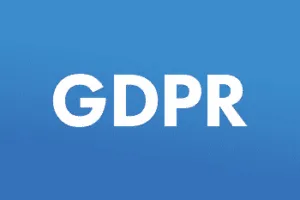Predictive analytics and big data are two forms of cutting-edge technology that are commonly integrated into apps and software, but many individuals are confused when it comes to how these two technologies compare. In fact, many are unsure which data-handling technology is best for their development project, which can make hiring the right developer a challenge.
So, when it comes to predictive analytics vs. big data, how do these two state-of-the-art technologies differ? And what application type is best suited to each type of technology?
What is Predictive Analytics?
A predictive analytics engine processes data, which is then used to offer a prediction or recommendation that aligns with a pre-established set of goals. For example, one of the most common uses of this technology involves ecommerce shopping portals, which use predictive analytics engines to process customer browsing and purchase data. This information is then used to generate product recommendations or “customers also bought” product listings in an effort to drive sales. Predictive analytics can be leveraged to predict the future or recommend virtually anything, from the perfect partner on a dating site to the best time to buy airline tickets to the ideal locations for the staff, vehicles, supplies and resources required after a major storm.
Predictive analytics engines can be configured to organize, process and interpret data—tasks that are also associated with a big data platform. There is some overlap in functionality, but the primary differential surrounds scale and complexity. If your data set is exceptionally voluminous or complex, then you’ll need to improve your data handling capabilities with big data technology. And once the data is processed and organized, predictive analytics engines can handle the next step of analyzing and utilizing that information for a specific purpose.
What is Big Data?
Big data refers to data-handling software that is developed to handle massive and complex data sets—sets of data that could easily crash an app using less sophisticated forms of data processing technology. A well-crafted big data interface can dramatically reduce the amount of computing power required to handle a tremendous set of data, as the developer has the ability to program in a way that maximizes the platform’s efficiency.
Developers will recommend using big data when you have a large volume of complex data that must be organized, processed and analyzed. A wonderful example involves weather modeling, which requires massive volumes of historical and current data. This data must then be processed and organized before you can take the next step of making an actual forecast or prediction.
Predictive Analytics vs Big Data: Using These Technologies Together
These two technologies are often confused because a predictive analytics engine can have some data handling capabilities and conversely, a big data portal can be developed to allow for some degree of data analysis and interpretation. But when you have an exceptionally large, complex data set and find your predictive analytics engine is lacking speed and efficiency, you’ll need to upgrade to proper big data technology. Similarly, if you have a big data portal and need to generate complex predictions, forecasts and recommendations, then integrating predictive analytics technology would be an effective way to achieve that objective.
In fact, these two technologies are frequently used in tandem. A big data portal will often include a predictive analytics engine, which processes the data and offers a recommendation or prediction based on the data set and other variables, such as pre-defined goals. For instance, a big data interface may be able to collect and organize temperature data; that system may also be capable of calculating the average temperature for a particular timeframe and predicting the next day’s temperature using the averages from the recent past. But a predictive analytics engine would be required to develop more detailed and accurate forecasts, as this technology could account for historical data, seasonal trends and the impact of an approaching weather system.
Meanwhile, a big data platform may include predictive analytics capabilities in order to generate more sophisticated and accurate forecasts, predictions or recommendations. Let’s say you have a virtual shop and you want to offer shopping recommendations to customers. A predictive analytics engine is certainly capable of handling this task. But if you also sought to use your data to make high-level business decisions—such as determining the best locations for opening brick-and-mortar shops and making staffing decisions based on sales volume predictions—then big data technology would be required because these predictions/recommendations require large, detailed and complex data sets.
As with many aspects of development, such as mobile app pricing, each project must be considered on a case-by-case basis due to the many unique variables. Of course, you’ll need a developer who is well-versed in these and other cutting-edge technologies, and that’s precisely where 7T can help.
At 7T, our developers are experienced in everything from augmented reality, artificial intelligence and natural language processing to machine learning, predictive analytics and blockchain. As such, we’re well-positioned to integrate innovative technology, giving you a leg up on the competition.
Based in Dallas, 7T works with clients throughout Texas—including Austin and Houston—and beyond. If you’re ready to discuss your project, contact our team today.











